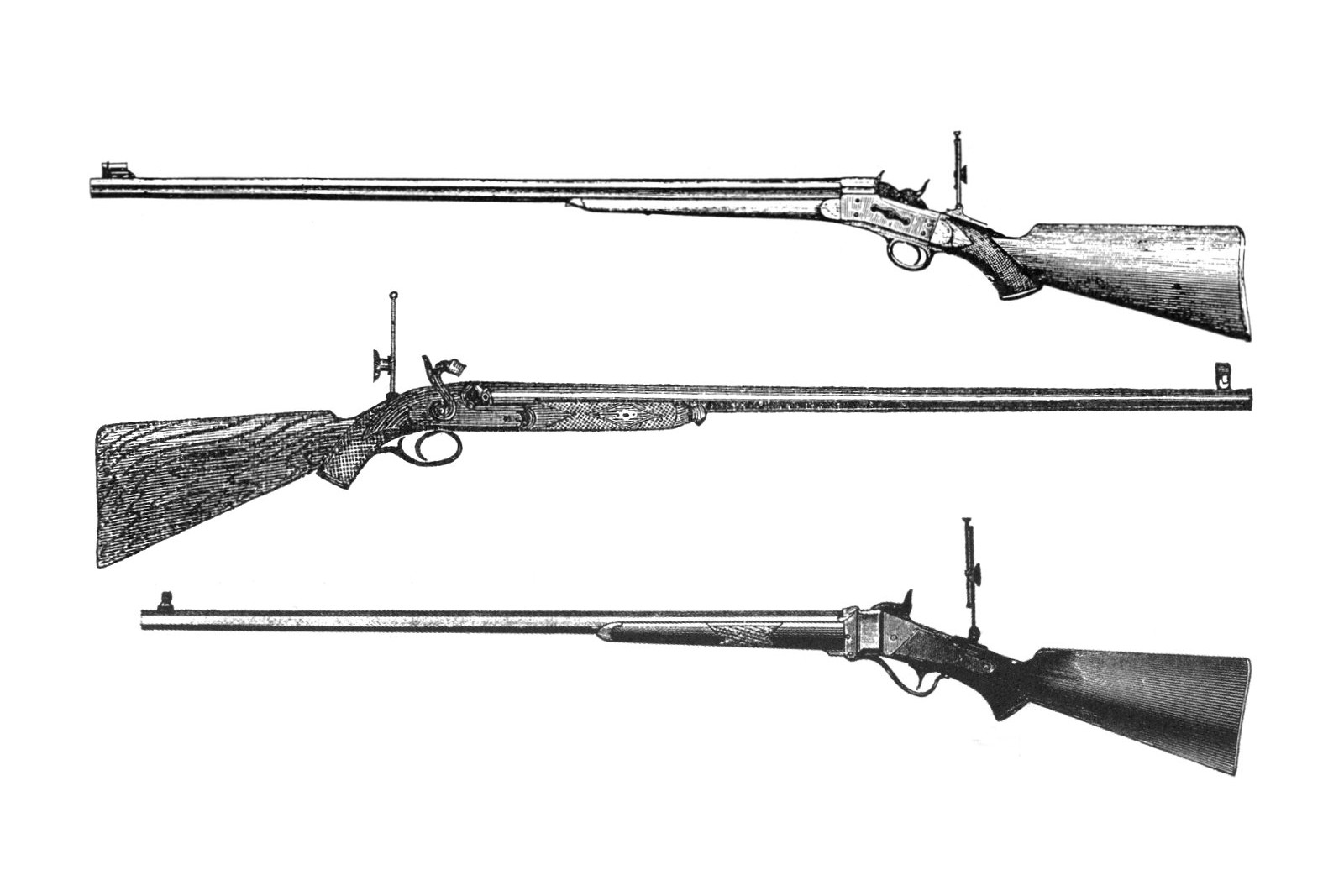You are here: Home > Firearms > Long Range Target Rifles
“Forest and Stream” published a ‘Hand-Book for Riflemen’ in 1876. The Hand-Book is authored by Major George C. Starr, Secretary of the American Rifle Association. (This is NOT the US NRA, that was a separate organisation.)
The generic description for the Creedmoor long range rifle states it weighed ten lbs, had a rifling twist of 1 in 20 inches and a 30 inch long barrel. Calibre 44-100.
According to this book, the charge of powder used by most long range shooters was 90 grains. Powder should be “rather large grain, of uniform quality, well mixed, and of low density.” The bullets are described; “swedged and patched bullets can be readily obtained; they are long, smooth and oval at the point, made of one part tin to twenty parts lead. They should weigh about 550 grains each.” Bullet length is stated as 1 6-10 inches.
The author of the ‘Hand-Book’ cites Wingates ‘Manual for Rifle Practice’ as a source for “valuable hints and facts”. I have a copy of the 6th Edition of the ‘Manual’ from 1878. Browsing this it can be seen where some of the information probably originated. Wingate does make some interesting observations:
“The powder should be of a uniform quality, bought in quantities, and well mixed, that of moderately large grain, and of low density, being preferred. Fine powder both fouls a gun and causes it to recoil. Hazard’s F.G., or the American powder, is that generaly used at Creedmoor……..
“The best shots in Great Britain and Canada insist that no advantage is gained by using a charge of over 90 grains, as that is all the rifle will burn. Mr. Hepburn (who has experimented extensively on the point), and other good shots in the country, are of the same opinion. Yet the tendency is toward heavier charges; and all the American team of 1875 used from 100 grains to 108 grains, and considered that it gave them an advantage, their bullets being less affected by wind than those of their opponents. In using 100 grains, three points less elevation is required than with a charge of 90 grains.”
Lt. Colonel Peel, the Adjutant to the British team defeated by America at Creedmoor in 1877 also noted that ‘heavy’ charges were used:
“The Americans state that with the breech-loader they can use a heavier charge of gunpowder than can be done with the muzzle-loader. They also lay great stress upon their powder burning slower than ours. They claim that by these means they obtain a lower trajectory, and that in other respects, their bullets are less effected by external influences. The heavy charge necessitates ‘cleaning out’ after every shot.”
